Width 60m | Geology Limonite and goethite | |
 | ||
Elevation −85 – −90 metres (−279 – −295 ft) | ||
The Baltic Sea anomaly is a 60-metre (200 ft) diameter circular rock-like formation on the floor of the northern Baltic Sea, at the center of the Bothnian Sea, discovered by Peter Lindberg, Dennis Åsberg and their Swedish "Ocean X" diving team in June 2011. The team reported that the formation rests on a pillar and includes a structure similar in appearance to a staircase, leading to a dark hole.
Contents
- The baltic sea anomaly ufo at the bottom of the sea
- Discovery
- Description
- Chemical composition
- Reaction
- Criticism
- Alternative explanations
- References

Commentators have suggested that the structure could be a World War II anti-submarine device, a battleship gun turret, sediment dropped by a fishing trawler, or a flying saucer. Geologists have stated that it is most likely a natural geological formation.
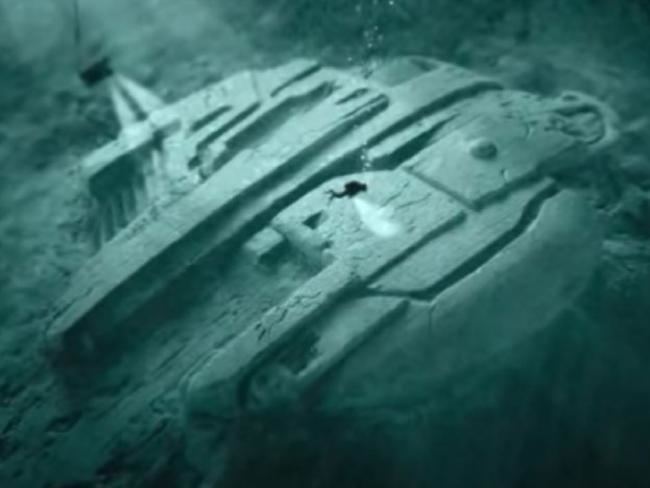
The baltic sea anomaly ufo at the bottom of the sea
Discovery
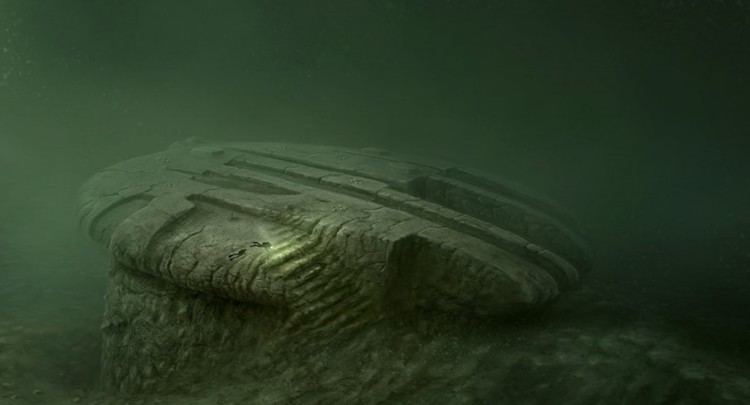
The discovery was made on June 19, 2011 by the Swedish-based "Ocean X Team" during a dive in the Baltic Sea between Sweden and Finland while searching for an old shipwreck. The group describes themselves as treasure hunters and salvage operators who specialize in underwater searches for sunken "antique high-end alcoholic beverages and historic artefacts". In March 2012, Ocean X formalized a partnership with entertainment producers Titan TV to produce a TV documentary series and documentary film.
Description
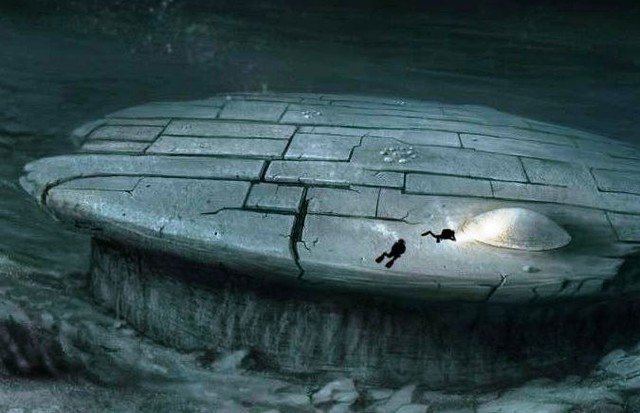
According to Ocean X, the formation has an appearance of "rough granite", is round, 3 to 4 metres (9.8 to 13.1 ft) thick and approximately 60 metres (200 ft) in diameter, stands on an 8-meter (26 ft) tall pillar-like feature, and is located at a depth of 85 to 90 metres (279 to 295 ft). There is also another smaller object not far away. The object is at the end of what resembles a 300-metre (980 ft) "runway".
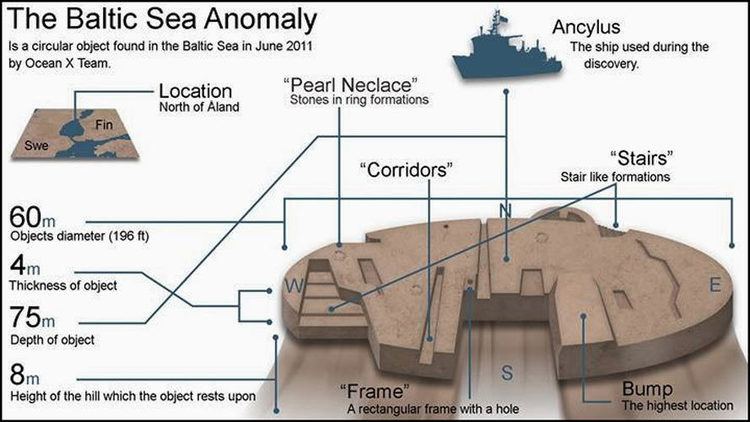
The Ocean X team has published one additional close-up sonar scan on their Web site and nine additional close-up sonar scans on their YouTube page that appear to show a 90-degree angle and other features of the object.
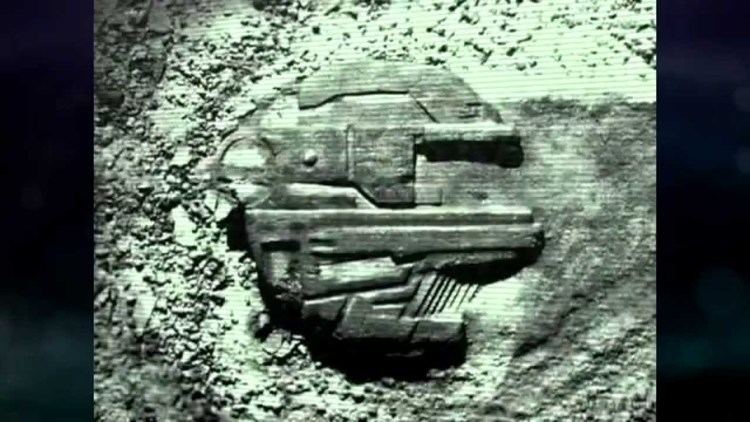
On their second expedition, they reported that they found something that looks like a staircase and a round black hole that goes directly into the structure.
Chemical composition
A sample recovered by divers was reportedly found to contain limonite and goethite. Israeli geologist Steve Weiner claimed that these materials are "metals which nature could not reproduce itself"; however, Swedish geologists Fredrik Klingberg and Martin Jakobsson say that the chemical composition of the sample resembles that of nodules that are not uncommon in sea beds, and that the materials found, including limonite and goethite, can indeed be formed by nature itself.
Stone samples have also been analyzed by Volker Brüchert, an associate professor of geology at Stockholm University. According to Brüchert, most of the samples that were brought up from the sea bottom are granites, gneisses and sandstones. Among the samples was also a single loose piece of basaltic (volcanic) rock, which is out of place on the seafloor, but not unusual. "Because the whole northern Baltic region is so heavily influenced by glacial thawing processes, both the feature and the rock samples are likely to have formed in connection with glacial and postglacial processes. [...] Possibly these rocks were transported there by glaciers", explained Brüchert.
Reaction
While a former Swedish naval officer speculated that the sonar image could show the remains of a World War II German anti-submarine device, and Discovery.com contributor Benjamin Radford considered that it could be a damaged gun turret from an old battleship, scientist Charles Paull of the Monterey Bay Aquarium Research Institute told Popular Mechanics it was more likely simply a rock outcrop, sediment dropped from a fishing trawler, or even a school of fish.
Göran Ekberg, marine archaeologist at Sjöhistoriska museet (Maritime museum) in Stockholm was quoted as saying, "A natural, geological formation can't be ruled out. I agree the finding looks weird since it's completely circular. But nature has produced stranger things than that." Martin Jakobsson, professor of marine geology and geophysics at Stockholm University also examined images from the dive and said, "I'm guessing it's some sort of sandstone. But to make things clear, I've only seen the media images, and I need more material before making an official statement." Danish archaeologist Jørgen Dencker said the formation was quite possibly a grouping of rocks deposited by Ice age glaciers. Other experts say that the formation may be a pillow basalt, a moraine, or the product of a hydrothermal vent.
Criticism
The single sonar image provided by Ocean X has drawn criticism from various sources. Hanumant Singh of the Woods Hole Oceanographic Institution has said that it cannot be trusted. Stating that a cheap inaccurate instrument was used for the image, he added that it had been improperly wired and calibrated. MSNBC said media comparisons to a flying saucer were likely suggested by graphic outlines drawn onto the sonar image, said to resemble the fictional spaceship Millennium Falcon. Paull of the Monterey Bay Aquarium Research Institute characterized the discovery as “curious and fun, but much ado about nothing."
Jonathan Hill of the Mars Space Flight Facility questioned the motives involved in Ocean X announcements, which included plans to take wealthy tourists in a submarine to visit the site. He was quoted as saying "Whenever people make extraordinary claims, it's always a good idea to consider for a moment whether they are personally benefiting from the claim or if it's a truly objective observation." He also suggested that it would have been simple to break off a piece and have it geologically tested, and said that test results showing it was simply rock would not have benefited Peter Lindberg.
Ocean X founder Peter Lindberg responded to charges of poor science and attempting to benefit from the publicity, saying "First we thought this was only stone, but this is something else. And since no volcanic activity has ever been reported in the Baltic Sea the find becomes even stranger."
Alternative explanations
Some ufologists have claimed the formation is an alien ship, though no evidence has been found to support this conclusion.
